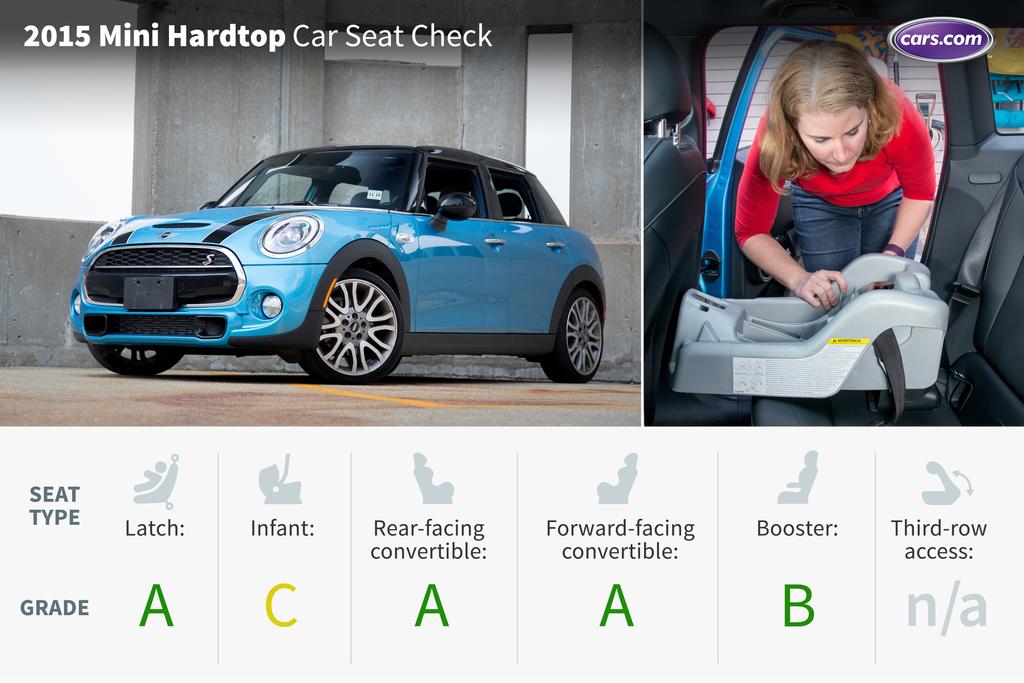
This Mini is surprisingly mighty when it comes to child-safety seats. The Mini Hardtop 4-Door is a new offering for 2015 that's roughly 6 inches longer than the Hardtop 2-Door. That additional length means there's extra space in the Hardtop 4-Door's backseat and cargo area. With 1.5 inches of extra rear legroom, the Hardtop 4-Door performed surprisingly well in our Car Seat Check.
How many car seats fit in the second row? Two
What We Like
- There are two sets of lower Latch anchors in the outboard rear seats. They sit behind hinged plastic covers and are easy to use. Three tether anchors are placed midway down the seatbacks.
- The convertible car seat in both rear- and forward-facing modes installed easily and fit well in the Hardtop 4-Door. There was no need to move the front passenger seat forward to accommodate the rear-facing convertible.
- The bolstered rear seats worked well with our high-back booster, holding it snugly in place.
What We Don't
- Mini says the Hardtop 4-Door has room for three passengers in the backseat, but the middle seat is so narrow that not even the skinniest kid on your block could fit in that seat.
- To fit the rear-facing infant seat, we had to move the front passenger seat forward a few inches and adjust the seatback into a more upright angle. Our 5-foot-8-inch tester had just enough knee room, but she was uncomfortable because of the seatback's angle.
- The rear seat belt buckles are on stable bases, but they're recessed into the middle seat's bottom cushion. This position will likely be difficult for younger kids in boosters to use independently.
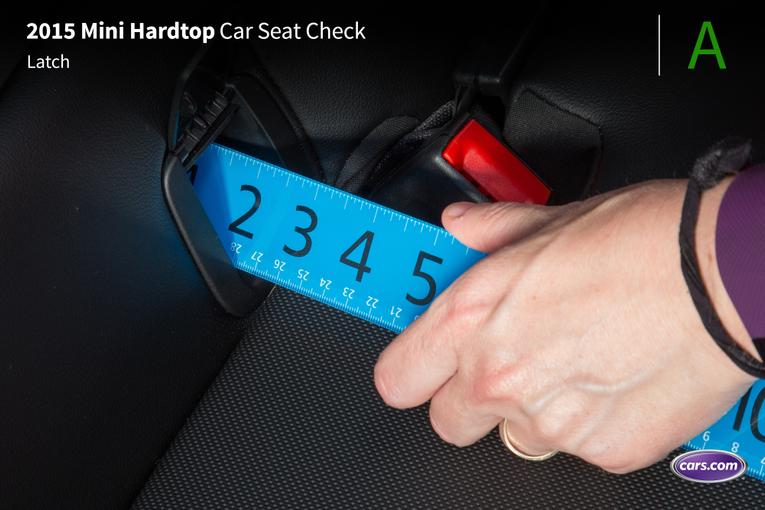
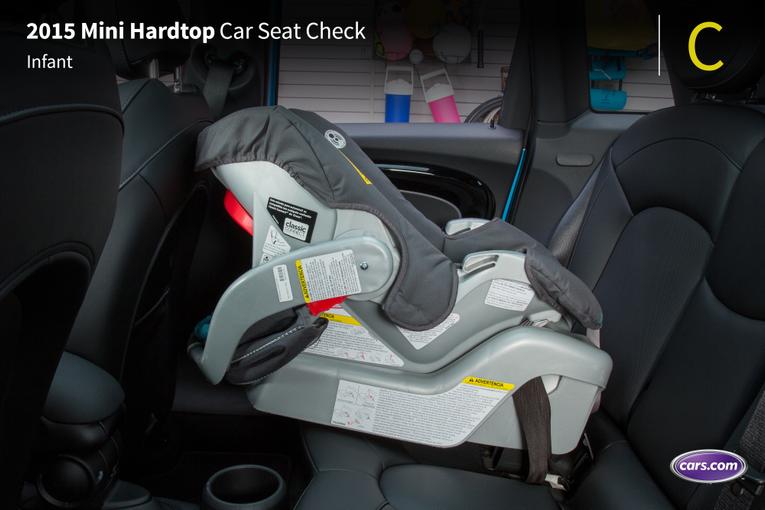
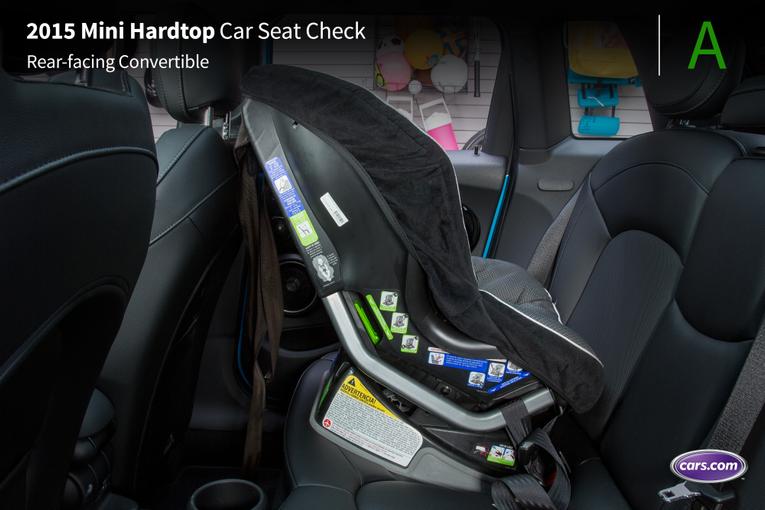
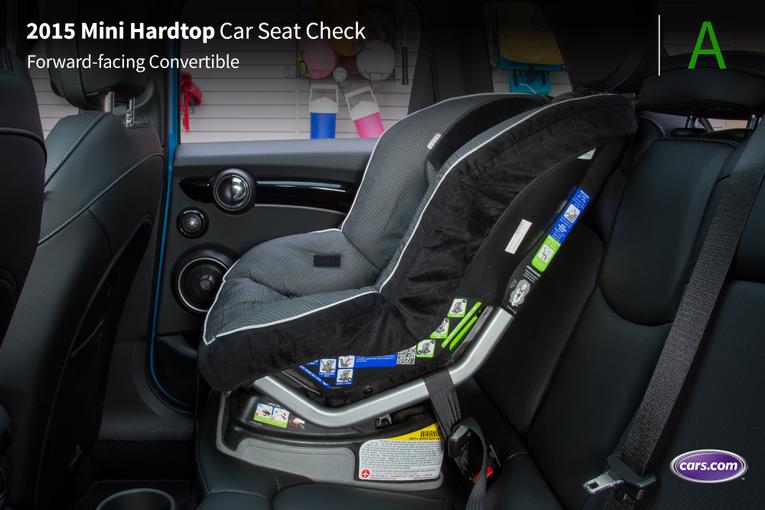
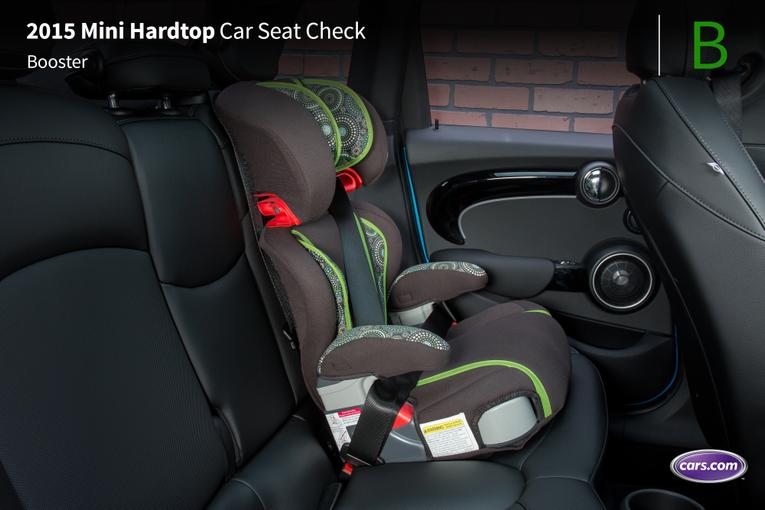
Grading Scale
A: Plenty of room for the car seat and the child; doesn't impact driver or front-passenger legroom. Easy to find and connect to Latch and tether anchors. No fit issues involving head restraint or seat contouring. Easy access to the third row.
B: Plenty of room. One fit or connection issue. Some problems accessing third row when available.
C: Marginal room. Two fit or connection issues. Difficult to access third row when available.
D: Insufficient room. Two or more fit or connection issues.
F: Does not fit or is unsafe.
About Cars.com's Car Seat Checks
Editors Jennifer Geiger and Jennifer Newman are certified child-safety seat installation technicians.
For the Car Seat Check, we use a Graco SnugRide Classic Connect 30 infant-safety seat, a Britax Marathon convertible seat and Graco TurboBooster seat. The front seats are adjusted for a 6-foot driver and a 5-foot-8 passenger. The three child seats are installed in the second row. The booster seat sits behind the driver's seat, and the infant and convertible seats are installed behind the front passenger seat.
We also install the forward-facing convertible in the second row's middle seat with the booster and infant seat in the outboard seats to see if three car seats will fit; a child sitting in the booster seat must be able to reach the seat belt buckle. If there's a third row, we install the booster seat and a forward-facing convertible. To learn more about how we conduct our Car Seat Checks, go here[JN4].
Parents should also remember that they can use the Latch system or a seat belt to install a car seat, and that Latch anchors have a weight limit of 65 pounds, including the weight of the child and the weight of the seat itself.
No comments:
Post a Comment